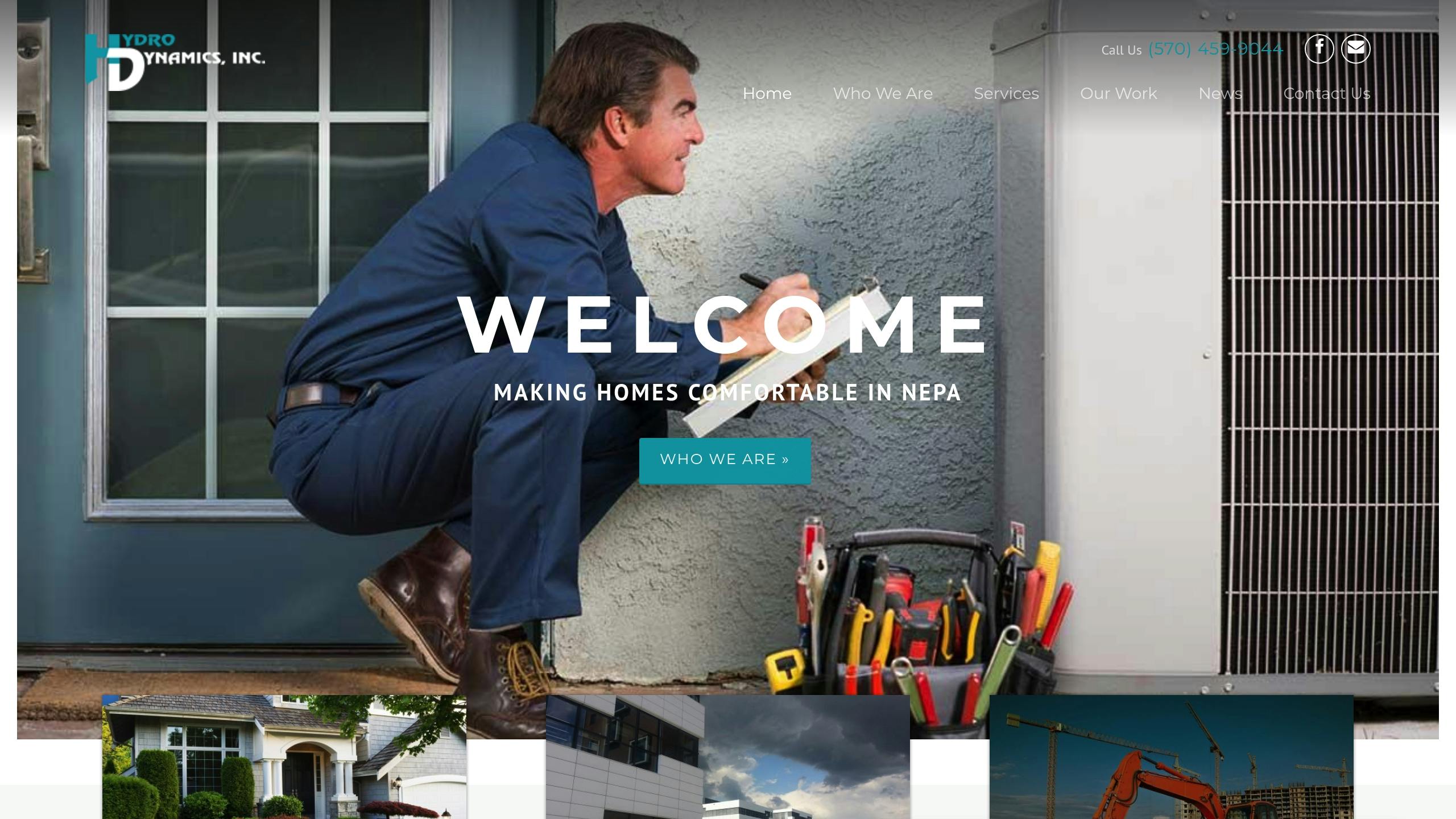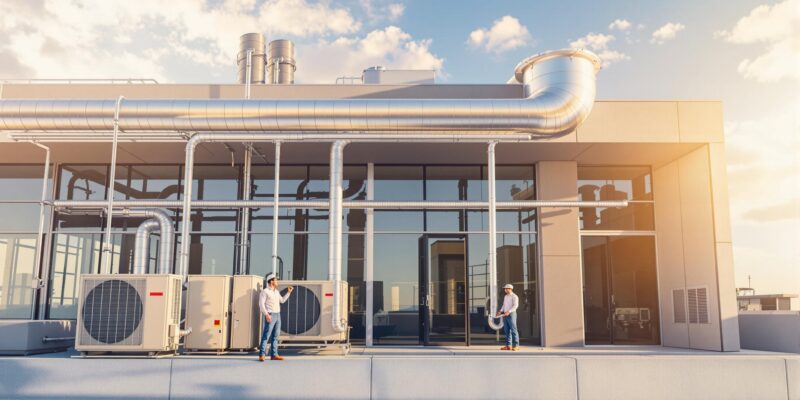HVAC Compliance for Commercial Buildings
Staying compliant with HVAC regulations is crucial for safety, efficiency, and avoiding penalties. Here’s a quick summary of what you need to know:
- Key Compliance Areas:
- Federal Standards: Governed by ASHRAE, EPA, and OSHA, focusing on energy, air quality, and workplace safety.
- Local Rules: Vary by state and often expand on federal guidelines. Stay updated on regional requirements.
- Testing & Certification: Regular inspections, air quality testing, and system performance checks are essential.
To stay compliant, work with certified technicians, maintain proper documentation, and plan for upcoming changes like refrigerant phase-outs and stricter efficiency standards.
Understanding HVAC Regulations And New Energy Efficiency …
HVAC Regulations for Commercial Buildings
Commercial HVAC systems must meet a range of federal, state, and local regulations to ensure safety, maintain efficiency, and avoid legal penalties.
Federal HVAC Standards
Several federal agencies oversee HVAC compliance for commercial buildings:
- ASHRAE (American Society of Heating, Refrigerating and Air-Conditioning Engineers): Sets guidelines for energy efficiency and indoor air quality.
- EPA (Environmental Protection Agency): Regulates refrigerants and emissions to protect the environment.
- OSHA (Occupational Safety and Health Administration): Focuses on workplace safety, including HVAC system standards.
Building Code Requirements
Local building codes often reference or expand upon these federal standards, and they can vary significantly by location.
Hydrodynamics assists clients in navigating these regulations, ensuring systems operate efficiently while meeting all necessary requirements. Key compliance areas include energy use, air quality, and refrigerant management.
Main Compliance Areas
Compliance with federal and local standards for commercial HVAC systems revolves around three key areas: energy, air quality, and refrigerants.
Energy Standards
Federal guidelines dictate how HVAC systems are designed, tested, and maintained to ensure energy efficiency. Regular audits and benchmarking help identify inefficiencies and areas for improvement. Hydrodynamics provides energy audits and system adjustments to help businesses meet these requirements and maintain optimal performance.
Air Quality Rules
Indoor air quality (IAQ) standards, such as those outlined by ASHRAE 62.1 and the EPA, address ventilation, humidity, and contaminant levels. Staying compliant involves routine inspections, filter replacements, and air quality testing. Hydrodynamics offers IAQ evaluations and maintenance services to help maintain a healthier indoor environment.
Refrigerant Rules
Under EPA Section 608, only certified technicians can handle refrigerants, including tasks like recovery, leak detection, and disposal. Hydrodynamics’ EPA-certified team follows strict protocols for refrigerant recovery, leak repairs, and record-keeping to ensure compliance and promote safety.
Testing and Certification
Testing and certification play a key role in ensuring commercial HVAC systems meet federal standards and operate effectively. These processes confirm compliance with energy, air quality, and refrigerant regulations before systems are formally evaluated.
System Checks
Routine inspections and maintenance are essential. Here’s what’s typically done:
- Visual inspections of equipment and controls
- Filter replacements, belt tightening, and securing electrical connections
- Thermostat and sensor calibration for accurate readings
- Documentation of inspection dates, performed actions, and results
Testing Methods
Certified technicians use established testing methods to assess systems based on energy efficiency and indoor air quality (IAQ) standards:
- Air balancing to evaluate supply and return airflow, room pressures, and ventilation rates
- Efficiency assessments to measure system performance (refer to Energy Standards for details)
- Certification tests to ensure systems meet compliance benchmarks
It’s also important to stay informed about state and local testing regulations, as well as any upcoming changes.
Local Rules and Updates
HVAC compliance rules aren’t the same everywhere. Beyond federal guidelines, regional building codes and energy-office requirements play a big role. Staying informed about these local differences is crucial.
State Differences
Each state adjusts HVAC regulations based on its climate and energy goals. For example, states may have specific rules about equipment efficiency, ventilation standards, inspections, and reporting. Always check with your state’s building codes and energy offices to ensure compliance.
New Standards
Recent updates include higher minimum efficiency requirements, stricter indoor air quality (IAQ) checks, and the need for digital record-keeping along with performance monitoring systems. These changes aim to improve system reliability and environmental impact.
Upcoming Changes
Future regulations are set to phase out refrigerants with high global warming potential (GWP), promote the use of advanced building automation, and require continuous performance tracking for HVAC systems.
To prepare, keep an eye on regulatory updates, audit your current systems, and work with certified HVAC experts to ensure a smooth transition. For more guidance, check out our compliance checklist to make sure you’re covering all bases.
Summary
Staying compliant with commercial HVAC regulations requires meeting specific standards and conducting regular system inspections.
Compliance Checklist
Here are the main areas to focus on:
- Equipment efficiency: Ensuring systems meet energy standards.
- Indoor air quality: Adhering to air quality regulations.
- Refrigerant management: Following rules for refrigerant use and disposal.
- System performance: Regular testing and obtaining necessary certifications.
- Safety protocols: Meeting building code requirements.
- Documentation: Keeping records like technician credentials and inspection reports up to date.
Hydrodynamics Support

Hydrodynamics provides services such as HVAC repair, replacement, maintenance, installations, and preventative care programs. Their technicians are certified in ASSE Backflow Testing, EPA 609, TracPipe, and GasTite, ensuring quality and compliance.

